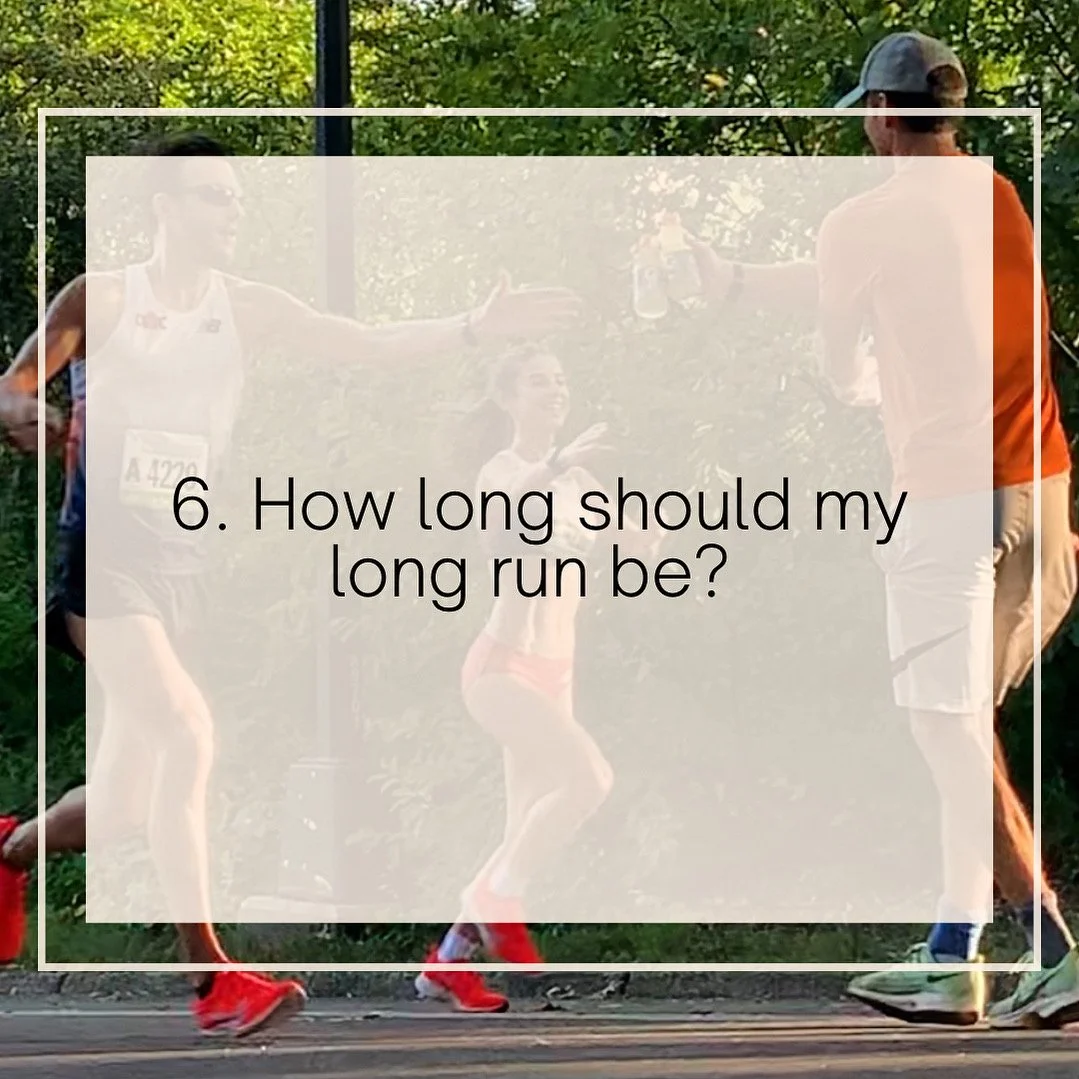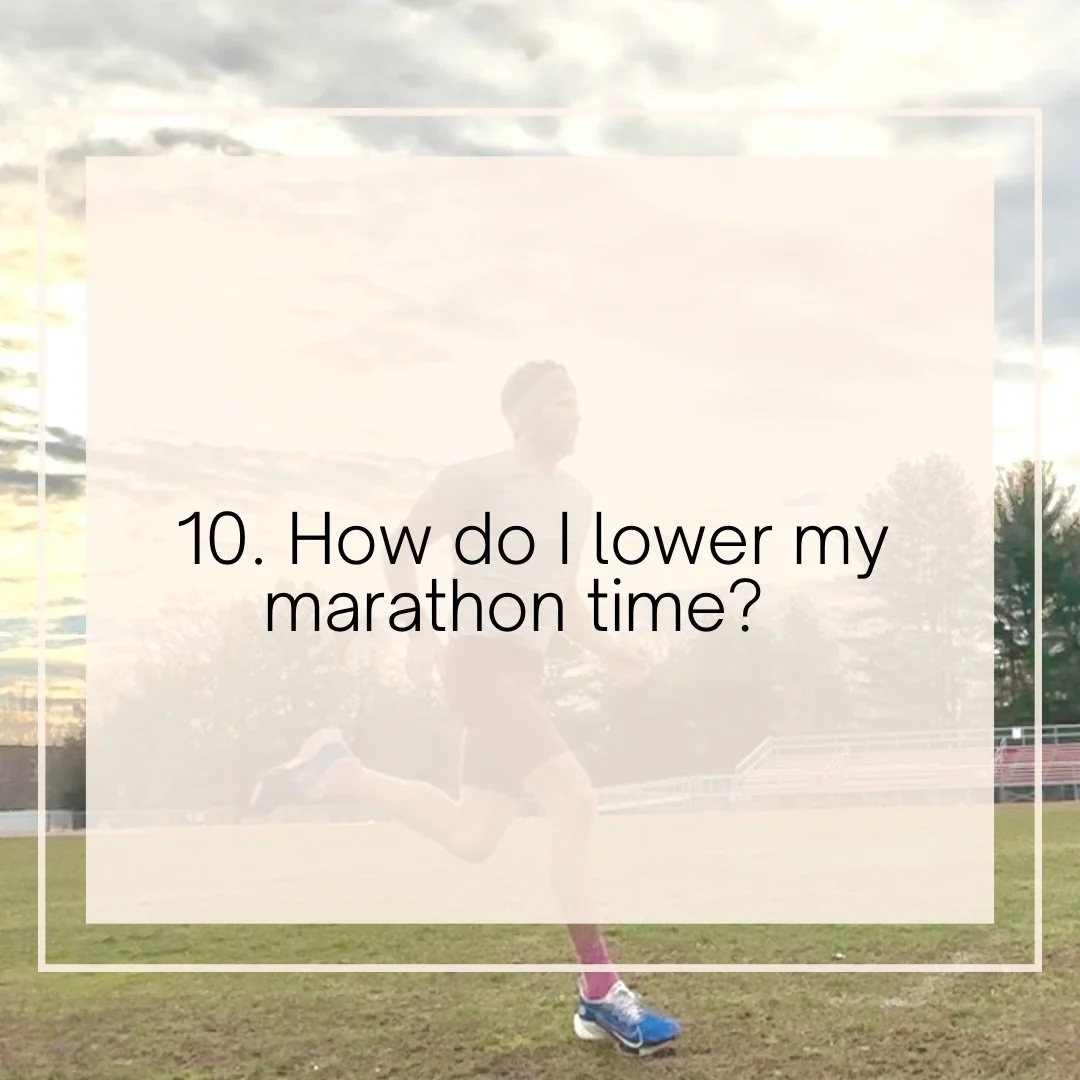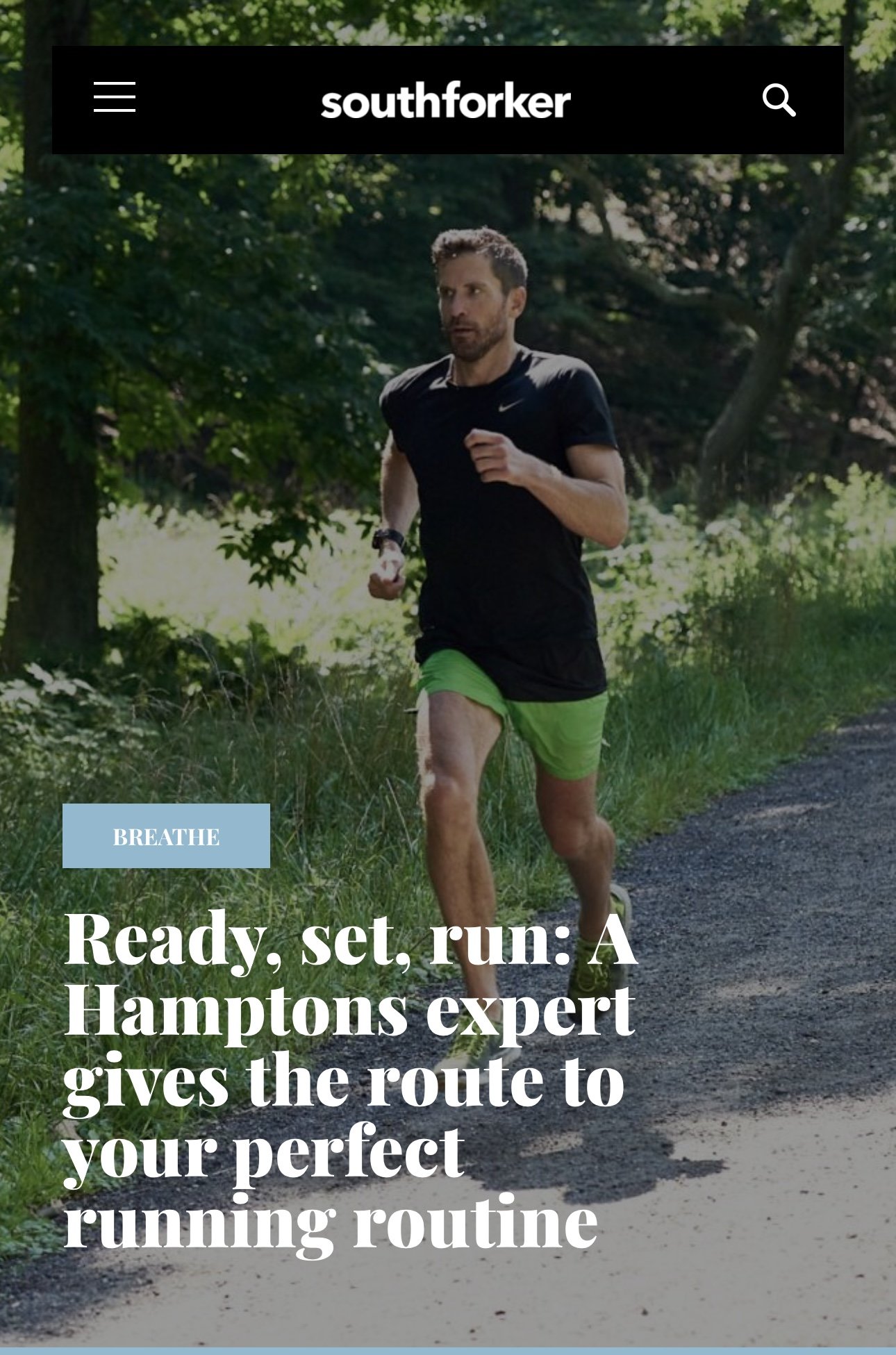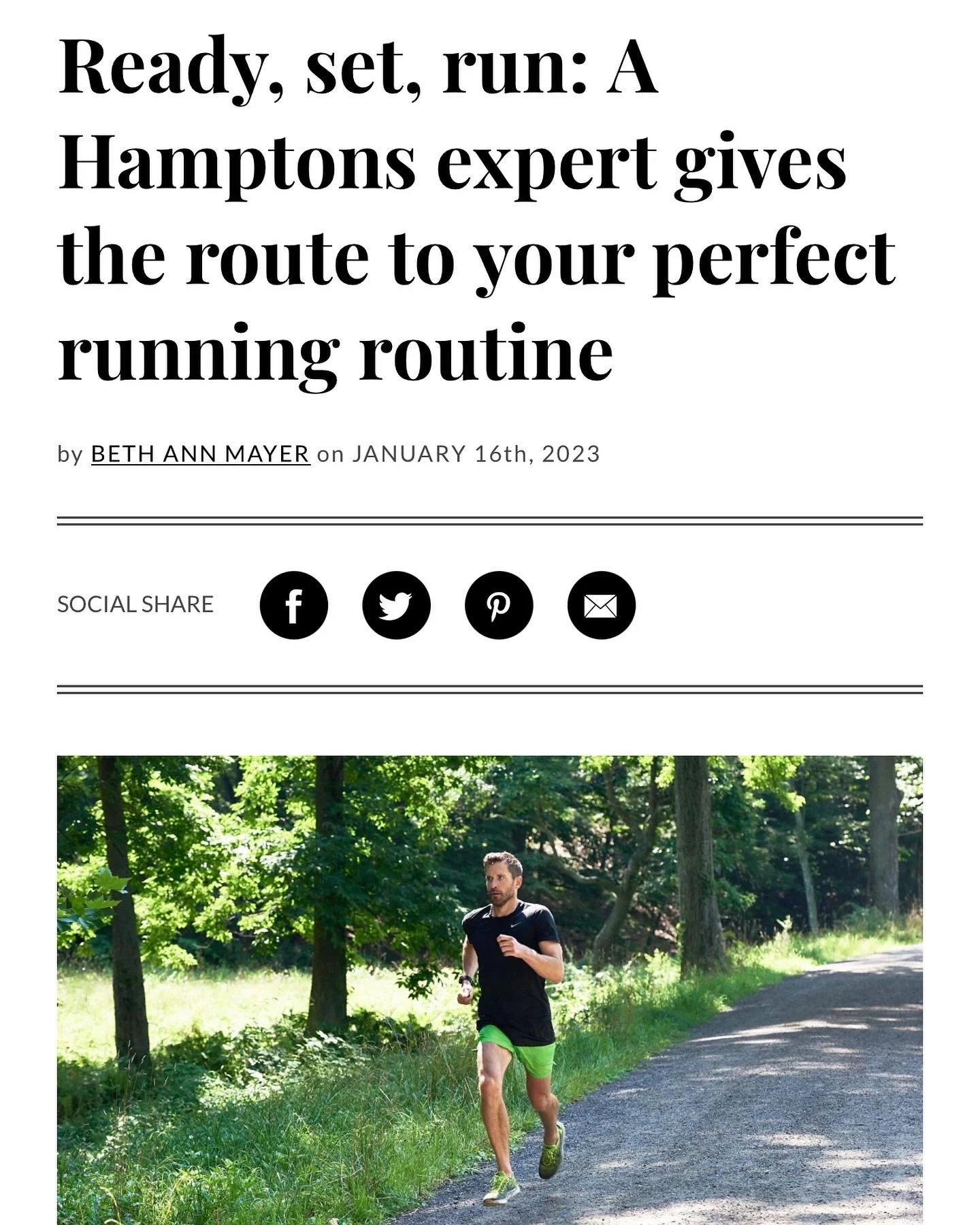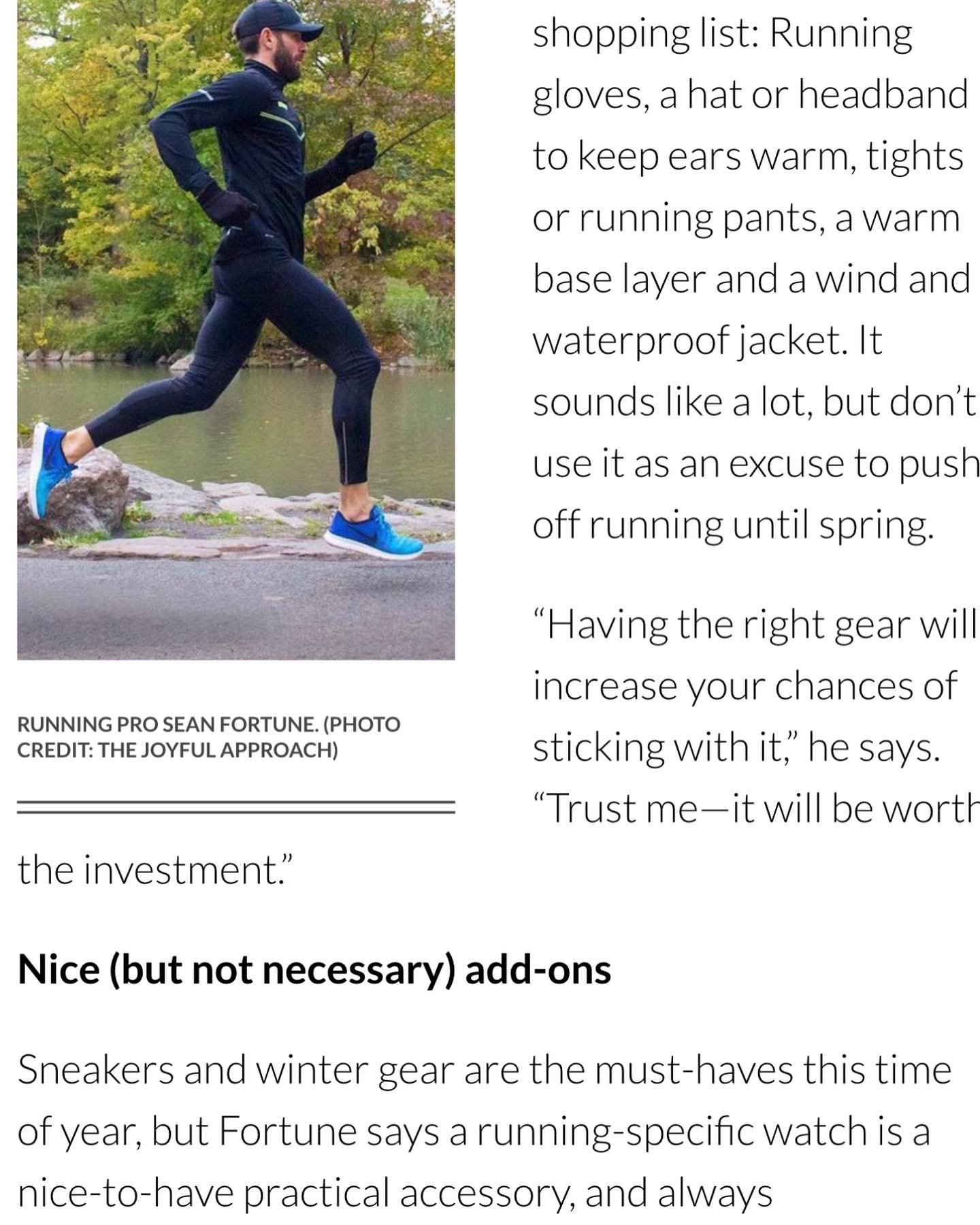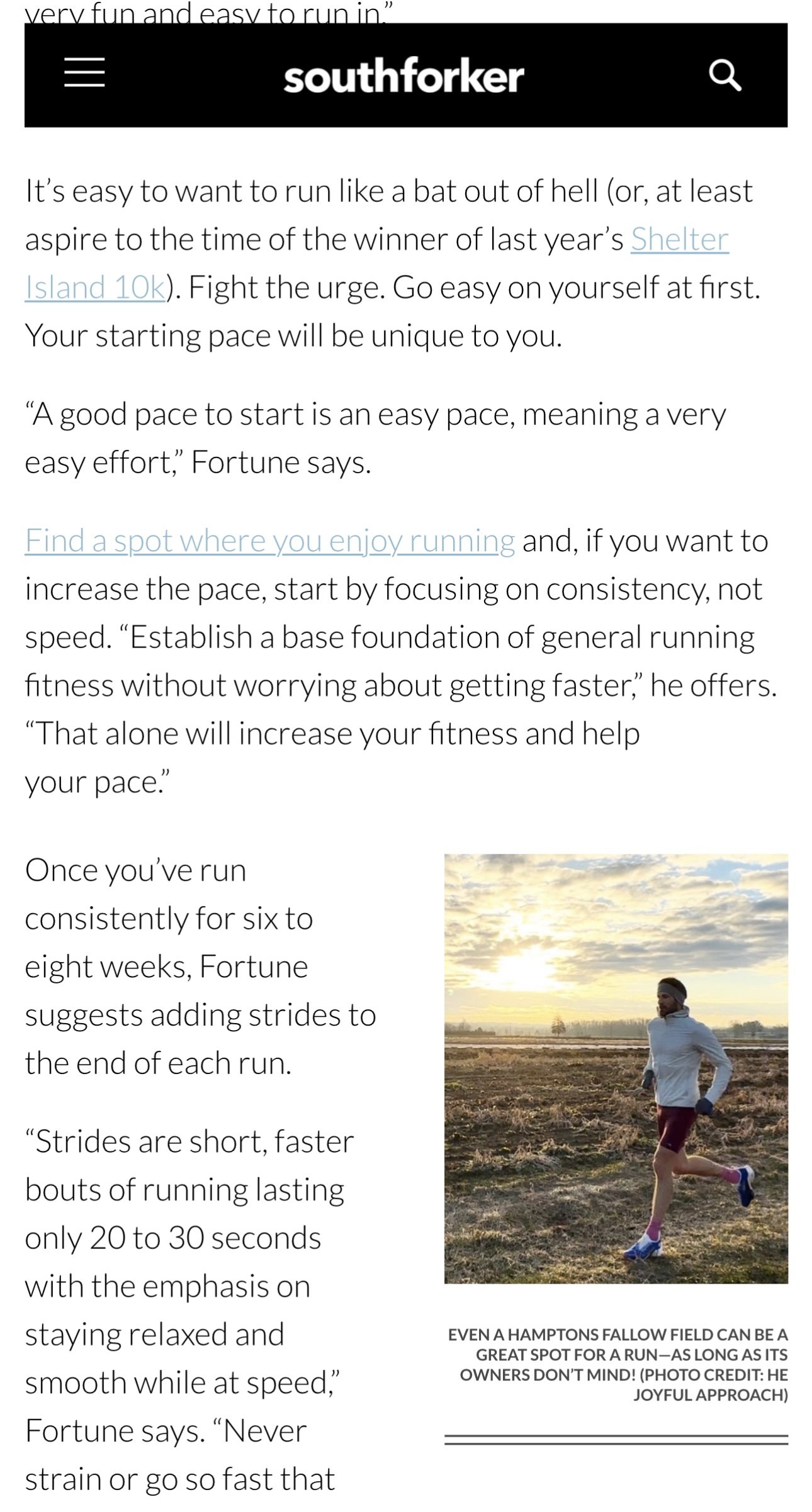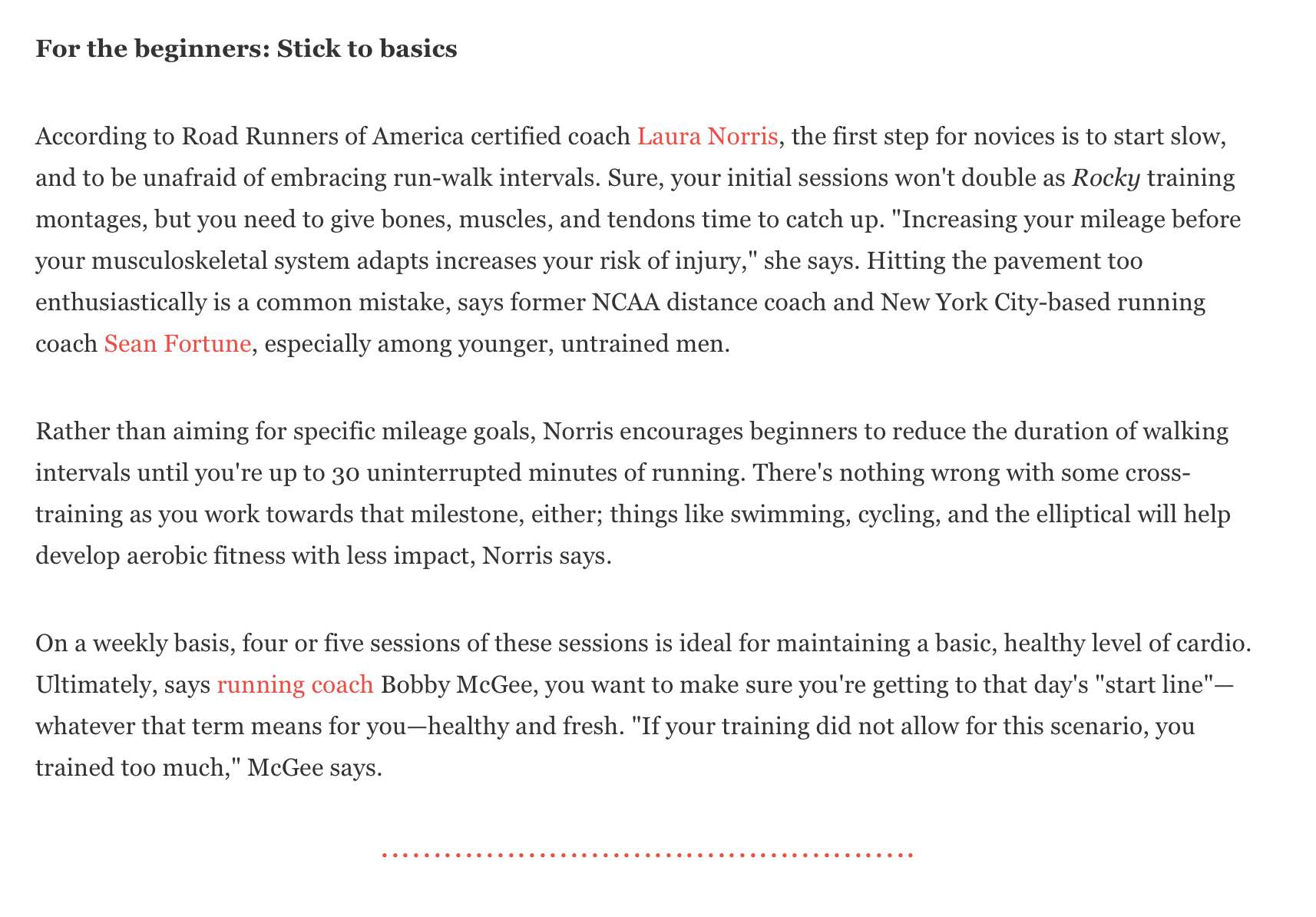6. Depends on what you’re training for and where you’re coming from. If you’ve established running as a habit and run regularly a safe rule of thumb you can shoot for is about 20-30% of your weekly mileage. Long runs should be done only 1x a week
A: Treating the recovery portion of your training as equally important as the active portion will give you the best odds at staying injury free. Think of it as a 50:50 split. That means easy days are easy. You invest in recovery gear: ice packs, roam roller, yoga stretch strap, compression boots, massages, etc. AND you use them liberally. You follow best practices whenever possible like the 10% rule - only increasing weekly mileage by 10% each week with the fourth week being a pullback week before starting another 3 week 10% progression. Keeping track of the mileage in your running shoes and replacing every 250-350 miles. Keeping your Long Runs to 20-30% of your weekly mileage, and don’t ignore little niggles, aches, and pains - treat them immediately.
For the next 10 days I’ll list the Top 10 Running Questions & Answers I get asked most frequently.
A. Depends on the individual but here are some of the things I look for: are you running enough? Are you doing speed work? Are you running long enough? Are you running too much? Are running too fast on easy days. Are you taking rest days? Are you getting enough sleep? Are you eating right? Are you cross training? Are you doing strength training, if so, how much? Are you racing shorter distances? Have you ever had bloodwork done? There’s a ton of questions that need to be unlocked to improve your marathon time, taking a good hard look at your global running regimen will likely find the answer.
There's plenty of tips on what to do before and during the NYC Marathon, but you rarely hear about what do to after. Here's my advice for before, during, and AFTER, the big day, written for the Joyful Approach blog.
2 weeks to go before the big race, you can feel it in the air.
Ken is doing 100 meter sprints. The warm temperture is ideal for short, fast sprinting which develops all-out speed, strength, and form efficiency.
This is a short video of my typical warm up routine before doing full-body strength training geared specifically to make me a more balanced, efficient, and faster runner.
This is short video I made of a final tune-up workout before Nationals of two of the fastest High School runners in New York City and the country.
Summer running in New York City is great for young runners learning the importance of safely building up consistent mileage; injuring preventing stretches; and running form drills to improve efficiency and economy.
Running in NYC during the summer months usually means New York City Marathon prep training; base-training; and as always - speed and form work. With this video, we primarily used it to analysis and help correct some form concerns that Josh was having.
With the warmer temps, running fast and comfortably is the natural progression after the cold winter months. New York City running is some of the best in country.
With the appropriate apparel, running in the winter is easy and a pleasure. Don't let chilly temps keep you away, visit a proper running store to get the right gear and get out there and start enjoying the outdoors all year long.
In this video, high school freshman and rising New York City miler, Ali, is working on her "top-end" running speed doing near all out 200 meter and 300 meter repetition sprints. Excellent for building speed and speed endurance which will improve her mile racing time and her fitness for lacrosse.
High School track runner doing sprints in Central Park on the east drive
Changing speeds during an interval running workout can help build race ready fitness in a manageable, less destructive way than just straight up hard, fast intervals. Lactate Threshold (high-end AEROBIC pace) 1200 meter intervals tire the legs sufficiently - mimicking racing fatigue without being abusive, followed by some shorter, faster intervals 300 meter / 200 meter / 100 meter sprints, challenging the body the same way as the end of the race.
Amy running lactate threshold pace followed by sprints
